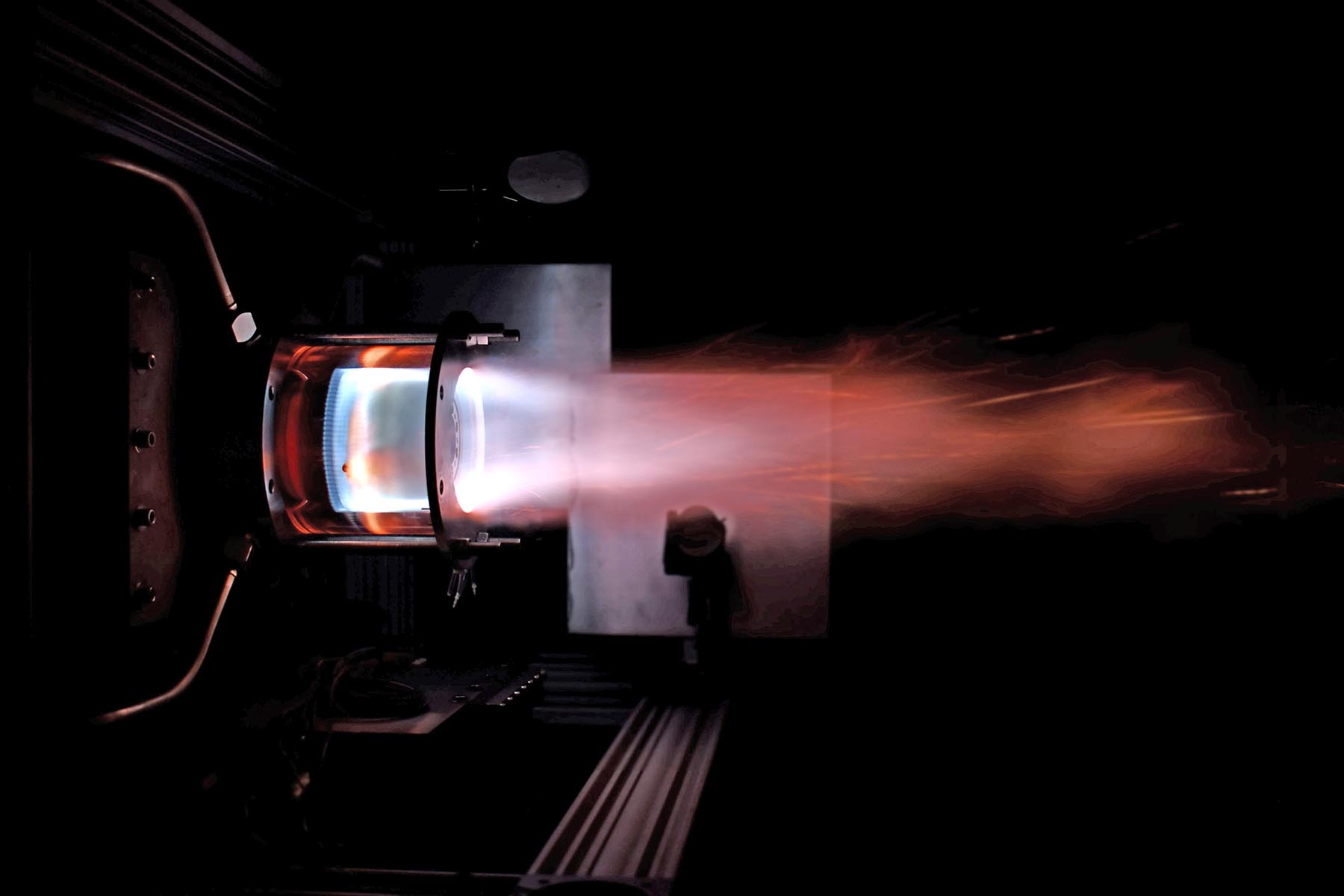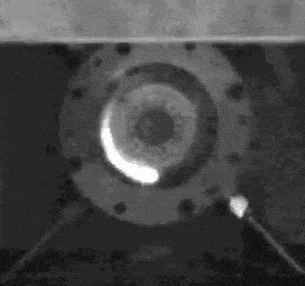NASA grant to help cool rotating detonation engines

Rotating detonation engines incorporate a unique swirling pressure wave, which travels around the rocket’s combustion chamber thousands of times a second. This rotating action captures more of the propellant’s energy than traditional combustion techniques.
Dozens of organizations around the world are exploring the potential of RDEs, including NASA. In 2022, NASA collaborated with Purdue University to conduct their first ever full-scale RDE test fire.
 But there’s a problem with these tests. “If you fire an RDE for more than a second or two, there is so much heat flux that your engine components will start to ablate, and eventually melt,” said Terrence Meyer, professor of mechanical engineering. “All RDE experiments to this point have circulated thousands of gallons of water as a stopgap measure to preserve their engines. But you can’t launch a rocket to space with thousands of gallons of water onboard. You need new strategies to actively cool an RDE.”
But there’s a problem with these tests. “If you fire an RDE for more than a second or two, there is so much heat flux that your engine components will start to ablate, and eventually melt,” said Terrence Meyer, professor of mechanical engineering. “All RDE experiments to this point have circulated thousands of gallons of water as a stopgap measure to preserve their engines. But you can’t launch a rocket to space with thousands of gallons of water onboard. You need new strategies to actively cool an RDE.”
Meyer’s research group specializes in advanced propulsion diagnostics, using lasers and high-speed cameras to measure temperatures and pressures in incredibly harsh combustion environments. They collaborated with the Japanese team who sent first-ever RDE to space, and are developing RDEs powered by solid fuel. Now they are addressing the challenge of how to actively cool RDEs.
NASA recently awarded a $150,000 grant through their Small Business Technology Transfer (STTR) program, which gives small businesses seed money to develop an idea in conjunction with a university. This grant was awarded to Spectral Energies, LLC, a small business founded by Terry Meyer and other Purdue University graduates to develop propulsion and defense technologies.
The research will take place at Purdue University’s Zucrow Labs, the largest academic propulsion lab in the world.
“We have unique test rigs at Zucrow that allow us to measure the heat flux in an RDE millions of times a second,” said Venkat Athmanathan, senior research scientist at Zucrow Labs. “Our tests have seen the temperature and pressure waves spike to huge numbers. Even in our little 5-inch experimental RDE rig, we measured a heat load equal to the Space Shuttle Main Engines! Cooling these engines will be a big challenge.”
“Clearly RDEs have potential, which is why NASA is interested,” Meyer said. “But before any of that can occur, we need an engine that can survive the thermal and mechanical shock of an RDE wave. Hopefully our research will establish the baselines of that heat flux, which will inform the next generation of actively cooled RDEs.”
Interested in collaborating? Contact Chris Fugger: chris.fugger@spectralenergies.com
Source: Terrence Meyer, trmeyer@purdue.edu
Writer: Jared Pike, jaredpike@purdue.edu, 765-496-0374
